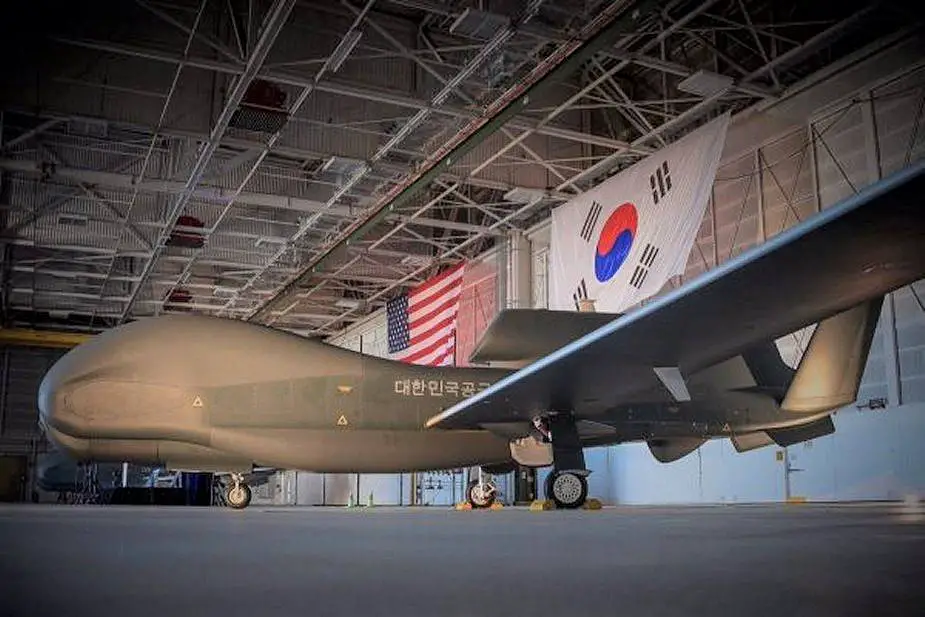Breaking news
Contract for Northrop Grumman to support Global Hawk unmanned aircraft of South Korea.
According to contracts published by the U.S. government on May 29, 2020, Northrop Grumman Systems Corp., San Diego, California, has been awarded a $12,641,680 firm-fixed-price modification (P00047) to contract FA8620-15-C-3001 for initial aircraft spares to assist in sustainment purposes of the Global Hawk in the Republic of Korea.
Follow Air Recognition on Google News at this link
 Global Hawk Block 30 Unmanned Aerial Vehicle of South Korea. (Picture source Twitter account Harry Harris)
Global Hawk Block 30 Unmanned Aerial Vehicle of South Korea. (Picture source Twitter account Harry Harris)
On 17 December 2014, Northrop Grumman was awarded a $657 million contract by South Korea for four RQ-4B Block 30 Global Hawks. In December 2019, South Korea has taken delivery of its first RQ-4 Block 30 Global Hawk advanced high-altitude unmanned aircraft. Three other unmanned aerial vehicles will be delivered in 2020.
As one of the most advanced intelligence-gathering platforms in the world, the long-endurance unmanned aerial vehicle, manufactured by US defense company Northrop Grumman, is capable of performing reconnaissance missions for around 40 hours at a time at an altitude of roughly 20 kilometers.
The Global Hawk is also in service with the United States Air Force (USAF). It is used as a High-Altitude Long Endurance platform covering the spectrum of intelligence collection capability to support forces in worldwide military operations. According to the USAF, the superior surveillance capabilities of the aircraft allow more precise weapons targeting and better protection of friendly forces.
The Global Hawk UAV system comprises the RQ-4 air vehicle, which is outfitted with various equipment such as sensor packages and communication systems; and a ground element consisting of a Launch and Recovery Element (LRE), and a Mission Control Element (MCE) with ground communications equipment.[56] Each RQ-4 air vehicle is powered by an Allison Rolls-Royce AE3007H turbofan engine with 7,050 lbf (31.4 kN) thrust and carries a payload of 2,000 pounds (910 kilograms). The fuselage comprises an aluminum, semi-monocoque construction with V-tail; the wings are made of composite materials.
The initial operational capability was declared for the RQ-4 Block 30 in August 2011. The RQ-4B Block 30 is capable of multi-intelligence (multi-INT) collecting with SAR and EO/IR sensors along with the Airborne Signals Intelligence Payload (ASIP), a wide-spectrum SIGINT sensor.


























